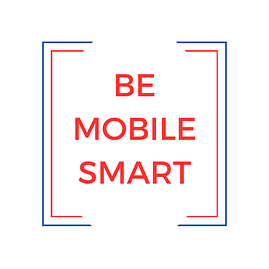
Dear Ms. Smartphone: My brother-in-law encouraged me to try #dryjanuary and it got me thinking. Should I counter and tell him to take a phonedetox #dry January? Yes, I like my occasional drink but he is a maniac when it comes to being on his phone. He favors it over conversation, uses it as a shield to avoid difficult topics, and spends countless hours scrolling. When it comes to phones, he is the original addict. Maybe I’ll send him this column! Carlo, San Francisco
Dear Carlo: In the Bay Area there has been nothing dry this January. It rained, then poured, then flooded. So, spending all this extra time indoors, many of us have turned to our phones more frequently. Excess time and attention on the phone can become a bad habit, like the need for #dryjanuary. Cutting back might improve our well being, mental health, and relationships with other people, right?!
But, while a digital detox sounds like an important regime change, it is also overrated and over promoted. We can’t go cold-turkey because we need our phones to do basic things, connect with others, and stay modern. But, there is a @dearsmartphone way to use the start of a New Year to evaluate our habits, and seek better ones.
I have invented a personal acronym for this. The acronym is even more potent than alcohol! It’s O-P-M and let your mind fill in the missing letters, an ‘I and U’. Catchy isn’t it?!
The goal of the O-P-M paradigm is to help you take stock of your phone habits and analyze how your time and energy are spent. You don’t have to be addicted to your phone, or have bad phone habits to pay attention- so yes, share with your brother in law. There are three main reasons why we reach for our phones. The O-P-M acronym identifies each one and helps you understand and control your habits.
O- operations
O stands for the multitude of Operations we use phones for. More and more activities from keyless entry to our cars, digital money on phones, and boarding passes for our travel trips- are enabled through the smartphone. There are also built in phone features that require no additional software like the flashlight, the alarm clock, a note taker- you get the picture.
It’s useful when you take the O-P-M test to count the number of ‘O’ activities (Operations) you do with your phone. If you want to scale back time on the phone and control the proliferation, carefully asses whether you want a particular function to be on your phone. Ask if there is an alternative to doing this activity on your smartphone. Not to pick on people who use their phone as an alarm clock, but health concerns about blue light and Melatonin would keep me up at night.
P- Person to Person
P stands for person-to-person activities we do on our phone. Within that, there are three main categories. Phones are person-to-person through text, through phone calls, and through email. Each one of these can be corrupted by non-persons, for example, robocalls, but for the most part, they are the bastions of connectivity. Two things increased a lot during Covid- one was alcohol consumption, hence the invention of #dryjanuary, and the other was picking up the phone to P-to P chats. When you are assessing your time and energy on smartphones in this New Year, P to P is the area you want to keep strong.
M- Media
M here is for Media- namely using our phones to access infotainment and social media. The difference between P-to -P and Media is that Media is more public. On Facebook you might receive messages from a group you belong to, or from a business that wants to reach you. And you might post to the group, or add photos to your wall. The point is that these messages resemble broadcasts, they are more public, and reach people beyond your personal acquaintances. Social media has made it possible for everyone to be a broadcaster and create messages that are intended for a wider audience. It has also made it possible to receive messages that are interesting and personalized, but designed with technology to grab attention and maximize the time we spend online and the number of click-throughs.
So, I recommend that you look at your media consumption, and evaluate whether the time you spend on the M is time well-spent.Say you read a print newspaper each day. In the past that might take 15 of 20 minutes of time and that would have created a daily picture of the outside world. In 2022, say you spend 20 minutes on social media. Will that help you understand the daily picture of the outside world, and create a composite view of what is taking place? One of the most insidious problems with the ‘M” of social media is that it reproduces what we like to see, and narrows our focus into so-called “filter bubbles.”
I-U
You will recall that the missing letters in the O-P- M are the ‘I and the U’. There will be overlaps between using social media to connect with a single individual or friend. Perhaps you want to tag this special person on social media or send them an image or meme through Facebook. Social media may be the currency you share in your P to P relationship. Our conversations are changing.
January is a good time to reflect on things we imbibe- both food, drink, and media. The latter is the one most easily overlooked. My own thinking on this has been improved by Dave Clear’s book called “Atomic Habits.” Old habits are not forever, and January is a fine time to shed some of them.

Leave a Reply
You must be logged in to post a comment.